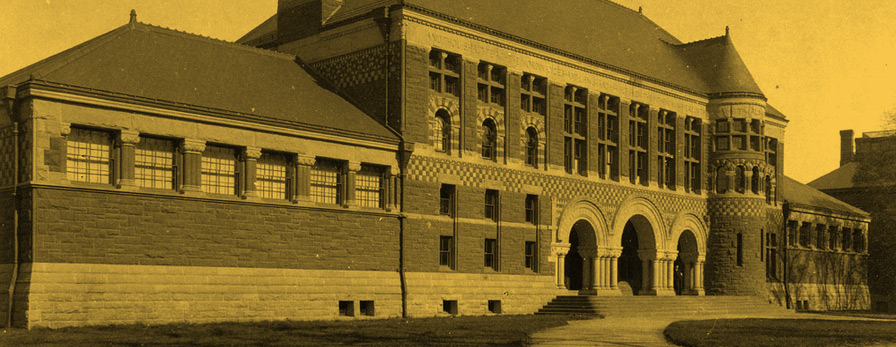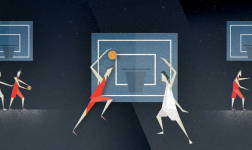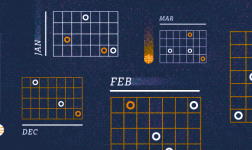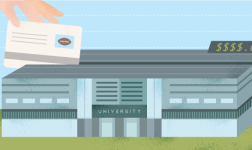 By: John Infante
By: John Infante
NCAA Expert for Athnet and creator of The Bylaw Blog
NCAA President Mark Emmert’s two-day August 2011 retreat covered “four threats to the integrity of college sports: a lack of shared responsibility, a preponderance of rules that buries a few fundamental principles in a forest of minutia, a risk/reward perception that fails to deter the willingness to violate rules, and the force of external influences that threaten to overwhelm the enterprise.” 1 2
“We agree the bylaws need to be simplified with clear emphasis on integrity,” Emmert wrote in the October 2011 edition of NCAA Champion Magazine. 3 “Let’s eliminate the unenforceable and irrelevant rules and focus on serious threats. Our system of shared responsibility and rules enforcement must be strong enough that everyone involved understands cheating will not be tolerated and the violations for breaking rules outweigh any benefit gained.”
Many college sports commentators have translated this into lists of “ten commandments.” 4 However, blending elite athletic training and competition with higher education cannot be accomplished with a few clay tablets or a pamphlet-sized rule book. Add in the revenue needed to fund athletic departments without unfairly burdening a university’s academic operations, and the need for more sophisticated rules and governance becomes even clearer. 5 “The process of simplifying and clarifying the Division I Manual already has begun,” NCAA Division I Vice President David Berst wrote in the same October 2011 magazine. 6
Building on the NCAA leadership’s vision and in view of recent media coverage for the state of the NCAA, 7 governance-based reform proposals, 8 and pay-for-play studies, 9 in this article I offer a new-version NCAA Bylaw 13 that is purposefully architected to be a progressive proposal for reform and enforcement. The goals of the draft were to reduce costs associated with monitoring and enforcement and to apply legislation where it can be most beneficial in the recruiting process. The goal is a document that can be (a) the basis for consensus-based implementation in 2012 and (b) immediately scalable for current compliance staff, resources, and systems currently in place at member institutions and in Indianapolis.
BYLAW 13
Bylaw 13.01 — General Principles
Bylaw 13.01.1 – Hierarchy of Considerations
The recruiting bylaws are created and should be changed taking into account the following considerations, in order:
(1) The ability of a recruit to make the best possible choice of collegiate institution and athletic program;
(2) The general welfare of a recruit;
(3) The ability of the rules to be effectively, efficiently, and consistently enforced;
(4) Competitive equity; and
(5) Work-life balance of institutional staff members and coaches.
These considerations are what should guide the rules and any changes to them. Choosing the right school is separated from general welfare. Otherwise, the rules would need to allow any sort of extra benefit or recruiting inducement.
Bylaw 13.01.2 – Sport-Specific Recruiting Regulations
Any sport-specific recruiting regulation other than the recruiting calendar may be added only by a unanimous vote of both the Legislative Council and the Board of Directors.
One of the biggest reasons for the glut of regulations in Bylaw 13 is that sport-specific regulations were added when an issue came up in an individual sport. That makes the regulations harder to decipher, and fattens the rule book. A sport should get its own regulation only if an issue of such national importance arises that every conference agrees it must be addressed for that sport.
Bylaw 13.02 — Definitions
Coach
A coach is any staff member, paid or volunteer, who counts against the team’s limit on the number of countable coaches listed in Bylaw 11.
Staff members are given increased recruiting privileges, but coaches have more. So they need to be singled out and defined.
Recruit
A recruit is any individual who after the final day of classes in eighth grade, continues to be involved in organized sports beyond purely educational or fitness activities (e.g., gym class).
The term prospective student-athlete is reduced to the colloquial “recruit.” It includes kids who have not yet started ninth grade, as recruits are identified, offered, and commit prior to ninth grade. But the definition is limited to only those kids who continue to participate in sports.
Recruiting Periods
Dead Period
During a dead period, staff members may not make phone calls, evaluate recruits, or have in-person contact on- or off-campus.
Live Period
During a live period, all staff members may make phone calls and have in-person, on-campus contact with recruits. Coaches may also evaluate prospects off-campus and have in-person contact, off-campus contact with recruits.
Recruiting periods are reduced to only two periods: live and dead. During the live period, coaches may engage in all types of recruiting, and staff members may make phone calls and meet prospects on-campus. During the dead period, the only recruiting activity that may be initiated by college staff members is written or electronic correspondence. This keeps open the lines of communication at all times using the cheapest and least-invasive means.
Bylaw 13.1 — Inducements
Bylaw 13.1.1 – Prohibited Inducements
Nothing of material value may be provided to a recruit or any individual associated with a recruit through their participation in sports unless authorized by these bylaws.
Self-explanatory.
Bylaw 13.2 — Correspondence
Bylaw 13.2.1 – Written Correspondence
Written correspondence may be sent to a recruit at any time by any staff member. Only the following types of correspondence are permissible:
(a) General correspondence with no attachments;
(b) Camp and clinic brochures;
(c) Questionnaires; and
(d) Written offers of financial aid.
Bylaw 13.2.2 – Electronic Correspondence
Electronic correspondence may be sent to a recruit at any time by any staff member. There are no limits on the type or frequency of electronic correspondence.
Bylaw 13.2.3 – Phone Calls
Phone calls (including voice-over-IP and video conferencing) may be made to a recruit at any time during a live period by any staff member with no limit on frequency.
The goal of the correspondence legislation is to get compliance offices out of the business of monitoring every detail of a coach’s communication with a prospect. The starting point for all correspondence is when a prospect begins ninth grade. Aside from phone calls and similar types of communication, there are no limits after that starting point. To bring some sanity to phone calls, still somewhat time consuming and costly, they are permitted only during live periods. And the number of permissible types of letters that can be sent are drastically reduced, but then unregulated.
Bylaw 13.3 — Evaluations
Bylaw 13.3.1 – Live Evaluations
Coaches may evaluate prospects at any regularly scheduled and published scholastic or non-scholastic practice or game that is open to the general public, as long as the contest occurs during a live period.
Rather than restricting evaluations to only certain types of events or creating a divide between scholastic and non-scholastic events, evaluations are permitted at any open event. This reduces impermissible tryouts and limits evaluations at open gyms or closed practices, where rule-breaking is most likely. At the same time, it increases the number of opportunities for coaches to evaluate many prospects at once.
Bylaw 13.1.1.1 – Limits on Live Evaluations
There is no limit on the number of live evaluations that may occur during live periods.
Bylaw 13.2.2 – Remote Evaluations
Coaches may view any video of a recruit engaged in practice or competition activities at any time. Coaches may obtain video of recruits through scouting or recruiting services, subject to the limitations in Bylaw 13.8.
If a coach can find a video of a prospect online or otherwise obtains it according to the rules, there is no difference between watching the video during a live or dead recruiting period.
Bylaw 13.4 — Tryouts
Bylaw 13.4.1 – On-Campus Tryouts
During an official visit, a recruit may participate in practice and conditioning activities subject to the same limitations as student-athletes. Recruits must receive a medical examination and sickle cell trait test prior to beginning any physical activity.
Official visits are often the final part of the recruiting process and should include the final and most intensive evaluation: setting up a tryout for the prospect. After a medical examination, the prospect can be put through the same paces as a student-athlete, subject to the same limits as student-athletes (i.e., four hours of activity per day).
Bylaw 13.4.2 – Sports Clubs
Each coach may participate on a volunteer basis with one non-scholastic sports team each year (July 1-June 30). A coach may only participate in coaching activities including practice, conditioning, competition, and player selection activities. A coach may not be involved in administrative activities of the club.
Sports clubs are deregulated quite a deal, but coaches are not allowed to create a financial interest in a sports club to avoid conflicts of interest. A coach may coach a team, but may not own or run the team.
Bylaw 13.4.3 – Camps and Clinics
An institution may operate camps and clinics for recruits at any time, subject to the following restrictions:
(a) The camp is open to any recruit who registers subject to restrictions only on gender, age, grade in school, or number;
(b) Each sport charges the same rate per day for all camps and provides the same services, amenities, and awards for all camps during a year (June 31-July 1). Lodging may be an additional charge for overnight camps or overnight tracks within a camp, but the same lodging at the same rate is used for a year;
(c) No recruits are employed at any camps or offered free or reduced price admission.
Camps are permitted with fewer conditions than before, but some important regulations are maintained. Camps can be operated at any time, but must be standard across all camps for a particular sport. This prevents some of the abuses associated with camps like elite camps that are in actuality elaborate recruiting visits and tryouts.
Bylaw 13.5 — Visits
Bylaw 13.5.1 – Unofficial Visits
Unofficial visits may be made by a recruit at any time.
Bylaw 13.5.1.1 – Expenses Provided on an Unofficial Visit
On an unofficial visit, a recruit may be provided up to three complimentary admissions to any regular-season home athletics event through a pass list and transportation anywhere within a 30-mile radius or to a facility regularly used for practice or home competition outside of the 30-mile radius once the prospect has arrived on campus.
Once the recruit arrives on campus, transportation around town is not a significant benefit. If a recruit wants to get a meal with student-athletes or a coach, the ride to a restaurant is insignificant, especially since the recruit is buying his/her own meal.
Bylaw 13.5.1.2 – Contact on an Unofficial Visit
Any institutional staff member or student-athlete may have on- or off-campus contact with a recruit within a 30-mile radius on an unofficial visit once the recruit arrives on campus without counting as an off-campus contact.
Similar to transportation within the locale of the institution, contact with student-athletes and other staff off-campus is not a significant recruiting advantage and is not a significant cost (since with the distance is limited to 30 miles).
Bylaw 13.5.2 – Official Visits
Each recruit may make 10 official visits, two visits to any one school, and may begin making official visits July 1 prior to the recruit’s junior year in high school.
Recruits now can take a total of 10 official visits and two to any institution. They are only allowed five and one to any institution prior to graduating high school. This moves the time period for official visits up one year and provides all 10 to prospects at once.
Bylaw 13.5.2.1 – Expenses Provided on an Official Visit
During an official visit, a recruit and his or her immediate family may be provided the following expenses:
(a) Round-trip transportation to and from the institution’s campus;
(b) Three consecutive nights’ lodging in a standard hotel room or dorm room;
(c) Nine regular meals;
(d) Three complimentary admissions through a pass list to any regular-season home athletics event.
The primary costs associated with official visits are regulated, while everything else is deregulated. The 48-hour period is eliminated in favor of just providing the same sort of expenses in a 48-hour visit. Because many visits start with an additional evening near the institution when the recruit arrives, that is allowed to be the start of the visit with no wiggle room. And with the time period gone, recruits are free to remain in town for vacation or competition without worrying about minor violations.
Bylaw 13.6 — Contact
In-person, off-campus contact with recruits may occur only during an open period and not before July 1 following a recruit’s sophomore year in high school.
Recruits get one year to just play and start high school before coaches begin to contact them in-person. Off-campus contact is then limited to live periods because it requires a great deal of time for both the coach and the recruit, and a great deal of expense for the coach.
Bylaw 13.7 — Offers and Signing
Bylaw 13.7.1 – Time Period for Offers
A written offer may be provided to an individual any time after he/she becomes a recruit.
One area that needs additional definition rather than less is the way the recruiting process ends. Right now, it is a hodgepodge of verbal commitments (which have no effect) and National Letter of Intent (NLI) signing (which has a huge effect). The goal is to orderly wind down the recruiting process when the recruit wants to end it, while not locking the recruit into a decision too early.
Bylaw 13.7.2 – Time Period for Signing
A recruit may sign an offer at any time it is permissible for the institution to make a written offer to the recruit.
This will effectively end verbal “commitments” as a milestone in the recruiting process. If a recruit will not sign the offer, he/she is not really committed.
Bylaw 13.7.3 – Effect of Signing
Bylaw 13.7.3.1 – On Institution
Once a recruit signs a written offer of athletics aid, the institution may not withdraw the offer for any reason except conviction of the recruit for a misdemeanor or felony, failure of the recruit to meet initial eligibility requirements, or failure of a recruit to be admitted to the institution.
If an institution wants to offer a recruit a scholarship, it has to be ready to commit to the recruit. Therefore, a signed scholarship offer cannot be withdrawn unless the recruit does something that warrants canceling the scholarship.
Bylaw 13.7.3.2 – On Recruit
Until a recruit signs an NLI, a recruit may withdraw his/her commitment at any time by sending written notice to the institution. While the recruit has a valid, signed offer with an institution, the recruit shall not make an official visit to any other Division I institution.
If the recruit commits to the institution, at least temporarily, the process should end for the recruit. It is almost impossible to police whether a recruit takes unofficial visits and talks to coaches. It is easier for institutions to check whether a recruit has signed before offering an official visit though. Recruits who have committed to an institution should not be receiving expenses to continue their recruiting process with other schools.
Bylaw 13.7.4 – National Letter of Intent
Bylaw 13.7.4.1 – Time Period for Signing
A recruit may sign an NLI beginning July 1 following the recruit’s sophomore year in high school.
The broad strokes of the NLI are brought into the NCAA rules themselves rather than being regulated by the Collegiate Commissioners Association. The Athletics Personnel and Recruiting Cabinet takes over regulation of the NLI. And references to other letter-of-intent programs are removed, with the actual scholarship agreement having a more significant effect. Conference letter-of-intent programs should be dealt with through conference rules and have no effect nationally.
Bylaw 13.7.4.2 – Basic Terms
Bylaw 13.7.4.2.1 – Recruit’s Obligations
A recruit who signs an NLI shall be required to attend the institution he/she signed with for one academic year. If a recruit fails to complete one academic year at the institution, he/she shall not be permitted to practice or compete with another institution for one academic year and shall lose one season of competition in all sports.
The major difference in the basic penalty for not fulfilling the NLI obligations is to prohibit practice and competition rather than aid. If the recruit leaves the institution early, there should be a significant cost. But that cost should not hold the recruit’s education hostage by preventing him/her from receiving a scholarship. Instead, the recruit is required to spend a year simply being a student unless he/she finishes a year at the first school.
Bylaw 13.7.4.2.2 – Institution’s Obligations
An institution who signs a recruit to an NLI shall be required to provide at least two academic years of athletically related financial aid to the recruit. If the institution does not provide a recruit who previously signed an offer of aid for one year with an updated offer at the time the NLI is issued, the existing offer is automatically extended by one academic year at the same amount.
This regulation assumes that scholarships can be offered for any amount of time. Signing an NLI means a recruit is giving up a lot. In return, a recruit should receive more than just the scholarship he/she could sign without an NLI. So signing the NLI requires that the institution commit to multiple years of aid. If the recruit is required to stay for one year, aid should be there for the second.
Bylaw 13.7.4.2.3 – Automatic Release
The form for the NLI shall include conditions by which the recruit can automatically be released from the NLI. Those conditions must include discontinuation of the recruit’s sport, replacement or removal of the head coach, finding by the Committee on Infractions or admission of major infractions in the recruit’s sport, or commission of any violation of NCAA regulations involving the recruit. An institution shall indicate on the NLI which automatic release conditions are active before issuing the NLI to the recruit.
Because the NLI is a national agreement, institutions should not be able to alter it without restriction. That does not mean there has to be no variation in what a prospect signs. That variation can be standardized. Automatically releasing the athlete is the area where the most individual tailoring is needed. Other conditions can be added, but violations, coaching changes, and discontinuing the sport should always be options.
Bylaw 13.8 — Recruiting and Scouting Services
An institution may purchase a subscription to any recruiting or scouting service as long as no one with a financial interest in the service is the parent, coach, club administrator/owner, teacher, school administrator, or mentor of a recruit. If an institution purchases a service from an individual associated with a recruit at any time, the recruit is permanently ineligible at the institution.
The goal of recruiting service restrictions is to prevent purchase of the service from being used as a proxy for purchasing access to or a commitment from a prospect. Instead of describing a front business that will not be investigated, the rules should simply prohibit the activity they are trying to prevent.
Bylaw 13.9 — Recruiting Calendars
Each sport’s rule-making committee may develop a recruiting calendar. The recruiting calendar may be changed on the same two-year cycle the playing rules of the sport are changed. The recruiting calendar shall designate the live and dead periods, but live periods must contain a minimum of 183 days total.
When coaches recruit is the one part of the recruiting regulations that should be sport-specific. Because seasons and cultures are different, when recruiting occurs should change to fit the sport. However, recruiting should not be limited so much that luxuries like private jets become a significant advantage. Therefore, coaches must be permitted to evaluate talent, visit recruits, and have visitors during the majority of the year.
Bylaw 13.10 — Publicity
Bylaw 13.10.1 – Comments On Recruits
A coach or institutional staff member may comment on recruits, the likelihood of a recruit signing, and the potential contributions of a recruit to the team at any time.
Recruiting is a public activity at this point. It makes little sense to prevent coaches from commenting on their recruiting when there is a plethora of Websites badgering prospects and waiting for leaks. The people most likely to oppose this bit of deregulation are the coaches themselves, who probably are not keen on answering every recruiting rumor and stroking recruits’ egos in the press.
Bylaw 13.10.2 – Promotion of a Recruit’s Visit
An institution may not publicize a recruit’s visit to campus nor may an institutional staff member state or confirm when a recruit will be visiting campus.
One regulation that still makes sense is to prohibit institutions from creating a frenzy on campus when a recruit visits. If institutions were to promote visits to campus, the risk of violations from boosters and fans trying to contact the prospect or potentially provide benefits becomes almost certain. Institutions should not be involved in exposing themselves to this type of risk.
Bylaw 13.10.3 – Coverage of a Coach’s Recruiting
An institution may provide coverage of where a coach is evaluating or contacting prospects, provided that all coverage includes a disclaimer that the institution is not encouraging fans, alumni, or boosters to attend a prospect’s games and summarizes relevant recruiting rules.
Some of the same risks that are associated with publicizing a visit are present when publicizing when a coach travels to visit a prospect. However, boosters and fans are typically concentrated near the institution. And when the prospect is in a family or competition setting, the risk of violations is lower since there are other parties (e.g., parents, coaches, principals) who have an interest in limiting access to the prospect. Finally, it is almost impossible to allow a coach to comment on recruiting while still prohibiting him/her from talking about where he/she is recruiting.
We are proud to feature submissions from college athletics professionals to promote best practices.
We give special thanks to John Infante for this article. John is the NCAA expert and writer of The Bylaw Blog for Athnet.
Key Insights
The current complexity of NCAA rules enforcement makes it a logistical nightmare for many member institutions, not to mention a tremendous economic burden. NCAA leaders recognize these issues and are working to simplify bylaws and lighten the load of enforcement when it comes to recruiting.
References:
- http://www.ncaa.org/wps/wcm/connect/public/NCAA/Resources/Latest+News/2011/August/Emmert+convenes+university+presidents+for+start+of+two-day+summit ↩
- http://catalog.proemags.com/publication/78bd5822#/78bd5822/38 ↩
- http://viewer.zmags.com/publication/78bd5822#/78bd5822/6 ↩
- http://aol.sportingnews.com/ncaa-football/story/2011-08-10/ncaa-only-needs-our-list-of-10-commandments-to-function ↩
- Noting a trend, USA Today recently noted: In the area of rules enforcement, there is sentiment to outsource efforts in instances of serious violations.
“Right now,” LeCrone says, “we do it with a staff that’s clearly kind of outmanned, if you will, and volunteers (who serve on the NCAA’s infractions committee). There might be room for an independent agency on what we would call real major, major cases.
“There are some cases here where we’re dealing with a criminal element. … And if we’re dealing with a criminal element, we need to have the nation’s best.”
http://www.usatoday.com/sports/college/story/2011-10-24/administrators-letter-ncaa-emmert-reforms/50898728/1 ↩ - http://viewer.zmags.com/publication/78bd5822#/78bd5822/8 ↩
- http://www.indyweek.com/indyweek/bill-friday-surveys-the-state-of-college-sports/Content?oid=2645837 ↩
- http://www.theatlantic.com/magazine/archive/2011/10/the-shame-of-college-sports/8643/?single_page=true
While this thorough magazine piece suggests that an Olympic model of governance, where athletes get a 20% vote, would radically alter the NCAA, historical data do not support that position. Reviewing prior votes and weighting them to the Olympic model of governance, there was not a single instance where a 20% voting block could have swung a vote to adopt or defeat a proposal and where the Legislative Council voted against the Student-Athlete Advisory Committee’s position. The weighted data do not identify any proposal that definitely would have turned out differently with student-athletes having more votes than the Big Ten, Big 12, Pac-12, and Southeastern Conference combined.
See also
http://www.indyweek.com/triangleoffense/archives/2011/09/15/forget-the-radical-reforms-here-are-realistic-proposals-for-cleaning-up-college-football-part-1
http://www.indyweek.com/triangleoffense/archives/2011/09/16/practical-reforms-for-ncaa-sportspart-2 ↩ - http://assets.usw.org/ncpa/The-Price-of-Poverty-in-Big-Time-College-Sport.pdf
My thoughts about the National College Players Association proposal are located here:
http://www.ncaa.org/blog/2011/09/ncpa-presents-good-question-hints-at-more-radical-change/ ↩




